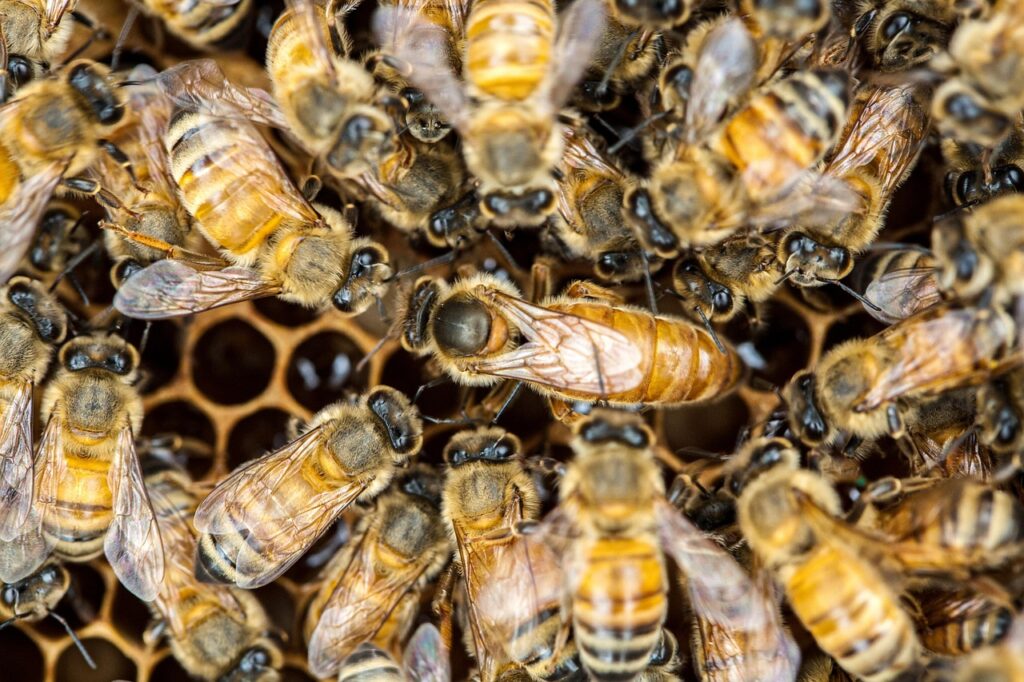Here’s a few specific activities bees do when they’re out in the field
When bees are out in the field, their specific activities consist of:
• Collecting nectar:
Bees use their proboscis to extract nectar from flowers, which they store in a special “honey stomach” to transport back to the hive for making honey[1][2][3].
• Gathering pollen:
Bees collect pollen—which clings to their hairy bodies due to static charge—and pack it into “pollen baskets” on their hind legs; this is a vital protein source for the colony’s brood[3][2].
• Collecting water:
Some bees collect water, which is used to cool the hive, dilute honey for feeding larvae, and maintain hive humidity[4].
• Gathering propolis (plant resin):
Bees collect resin from plants to create propolis, a sticky substance used to seal gaps and protect the hive from diseases and invaders[4][5].
• Pollinating plants:
While moving from flower to flower, bees transfer pollen between plants, which is essential for pollination, crop production, and ecosystem health[6][5].
• Scouting for resources:
Some bees act as scouts, searching for new foraging areas or floral sources and then relaying this information to other bees via the “waggle dance”[5].
• Species and area fidelity:
During a foraging trip, a bee typically visits only one type of plant (species fidelity) and often keeps returning to a productive area (area fidelity)[5][6].
• Finding mates and nesting (solitary and queen bees):
In some species and at certain times of year, female solitary bees and bumblebee queens search for mates, suitable nesting sites, or places to lay eggs[7][8].
A honeybee or bumblebee will typically visit dozens or even hundreds of flowers during a single foraging trip.
These repetitive tasks are highly structured and collectively critical to both the bees’ survival and ecosystem health[1][3][2].
⁂
1. https://www.chicagobotanic.org/plantinfo/smartgardener/how_honey_happens
2. https://ag.arizona.edu/pubs/insects/ahb/inf4.html
3. https://teara.govt.nz/mi/beekeeping/page-4
4. https://bigislandbees.com/blogs/bee-blog/14137353-bee-hive-hierarchy-and-activities
5. https://www.hobbyfarms.com/25-things-didnt-know-honeybee-foraging/
6. https://www2.gov.bc.ca/assets/gov/farming-natural-resources-and-industry/agriculture-and-seafood/animal-and-crops/animal-production/bee-assets/api_fs111.pdf
7. https://blogs.oregonstate.edu/gardenecologylab/2022/07/25/what-are-bees-doing-right-now-summer-edition/
8. https://blogs.oregonstate.edu/gardenecologylab/category/what-are-the-bees-doing/



